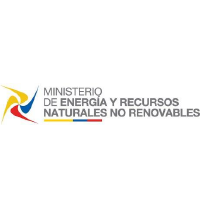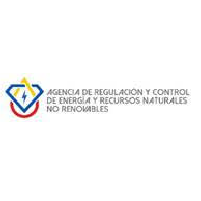Evaluación del efecto de las Variables Meteorológicas en el desempeño Térmico de una Edificación residencial a Partir de Datos Monitoreados
Evaluation of the effect of meteorological variables on the thermal performance of a residential building based on monitored data
Cómo citar
Descargar cita
Mostrar biografía de los autores
Artículos similares
- Kleber Zhañay, Cristian Leiva, Erika Pilataxi, William Quitiaquez, Modelo de Correlación Desgaste - Cantidad de Sedimentos para la Programación de Mantenimiento Preventivo de una central Hidroeléctrica , Revista Técnica "energía": Vol. 21 Núm. 2 (2025): Revista Técnica "energía", Edición No. 21, ISSUE II
- Carlos Lozada, David Panchi, Wilson Sánchez, Andrés Jacho, Regresión Lineal para la Identificación del Punto de Máxima Potencia en Microrredes Híbridas Implementado en HYPERSIM , Revista Técnica "energía": Vol. 20 Núm. 2 (2024): Revista Técnica "energía", Edición No. 20, ISSUE II
- Flavio Villacrés, Alexis Torres, Marlo Chamba, Carlos Lozada, Estrategia Adaptativa para el Alivio de Carga en Sistemas Eléctricos de Potencia Basada en Regresión Lineal , Revista Técnica "energía": Vol. 22 Núm. 1 (2025): Revista Técnica "energía", Edición No. 22, ISSUE I
- Alex Mullo, José Reinoso, Marlon Chamba, Carlos Lozada, Análisis y Caracterización de la Calidad de Energía utilizando Minería de Datos , Revista Técnica "energía": Vol. 22 Núm. 1 (2025): Revista Técnica "energía", Edición No. 22, ISSUE I
- Isaac Simbaña, William Quitiaquez, Patricio Cabezas, Patricio Quitiaquez, Estudio comparativo de la eficiencia de colectores solares de placa plana rectangular y triangular mediante el método de elementos finitos , Revista Técnica "energía": Vol. 20 Núm. 2 (2024): Revista Técnica "energía", Edición No. 20, ISSUE II
- Alex Villamarín Jácome, Miguel Saltos, Juan Echever, Dimensionamiento Óptimo de Sistemas Fotovoltaicos y Baterías en Entornos Residenciales para Reducir la Dependencia de la Infraestructura Eléctrica Centralizada , Revista Técnica "energía": Vol. 21 Núm. 2 (2025): Revista Técnica "energía", Edición No. 21, ISSUE II
- Johnny Heredia, Edy Ayala , Diseño de Sistema para la Generación de Mantenimiento Predictivo Basado en IoT e Inteligencia Artificial para Talleres de Mecánica Exprés , Revista Técnica "energía": Vol. 21 Núm. 2 (2025): Revista Técnica "energía", Edición No. 21, ISSUE II
- William Quitiaquez, Hugo Meneses, Patricio Quitiaquez, Isaac Simbaña, Regeneración de Componentes Deteriorados de Motores de Combustión Interna Utilizados en Centrales Térmicas , Revista Técnica "energía": Vol. 21 Núm. 2 (2025): Revista Técnica "energía", Edición No. 21, ISSUE II
- Paulo Castro, Jaime Cepeda, Análisis del Impacto de la Penetración de Energías Renovables no Gestionables en la seguridad operativa de los Sistemas Eléctricos de Potencia , Revista Técnica "energía": Vol. 22 Núm. 1 (2025): Revista Técnica "energía", Edición No. 22, ISSUE I
- Josue Ortiz, Jefferson Tayupanda, Carlos Quinatoa, Solución al problema de despacho hidrotérmico a corto plazo mediante la programación no lineal aplicada a sistemas de uno y varios nodos , Revista Técnica "energía": Vol. 20 Núm. 2 (2024): Revista Técnica "energía", Edición No. 20, ISSUE II
También puede Iniciar una búsqueda de similitud avanzada para este artículo.
Artículos más leídos del mismo autor/a
- Catalina Vallejo, Luis Godoy, Francis Vásquez, Geovanna Villacreses, Marco Orozco, Santiago Navarro, Estrategias para Mejorar la Eficiencia Energética en Edificios de servicios públicos, en una Zona Climática Calurosa y Húmeda: Caso de Estudio en Guayaquil, Ecuador , Revista Técnica "energía": Vol. 21 Núm. 1 (2024): Revista Técnica "energía", Edición No. 21, ISSUE I
- Lisseth Jami, Catalina Vallejo, Francis Vásquez, Luis Condo, Luis Godoy, Metodología de asociación de información catastral y eléctrica mediante herramientas SIG y SQL: Caso de estudio Quito, Ecuador , Revista Técnica "energía": Vol. 19 Núm. 1 (2022): Revista Técnica "energía", Edición No. 19, ISSUE I
Las estrategias para promover el uso eficiente de energía y el confort térmico han sido acciones aplicadas mundialmente. Siendo la variación de temperatura un factor preocupante para los gobiernos debido a la influencia por alcanzar las metas energéticas propuestas por los ODS. En este sentido, el comportamiento térmico al interior de una edificación podría estar relacionado a las condiciones externas y se pueden estimar a través de herramientas de simulación energética. Sin embargo, los resultados presentan diferentes niveles de incertidumbre debido a la calidad de datos meteorológicos, las propiedades de los materiales, los patrones de ocupación, así como la complejidad de generar procesos de evaluación térmica. Frente a esto, mediciones experimentales para evaluar el estado real de una edificación y así predecir su comportamiento respecto a la meteorología pueden tener un gran aporte. En este contexto, este estudio desarrolla una metodología para evaluar la incidencia del clima en el comportamiento térmico de una edificación. La evaluación se realiza en una vivienda prototipo experimental localizada en una región ecuatorial monitoreada por aproximadamente un año. Con los datos disponibles, se desarrollaron modelos de regresión lineal validados para estimar el comportamiento de la temperatura interior en función de una o varias variables ambientales. Los resultados del modelo de predicción de la temperatura interna del aire presenta un R2 de 0.41, en el peor de los casos cuando se disponga solo de la temperatura ambiente para la predicción, y un error experimental del 10%. Por lo tanto, esta metodología puede ser replicada en edificaciones de diferentes usos, clima y ajustada a la disponibilidad de datos.
Visitas del artículo 1164 | Visitas PDF 523
Descargas
[1] International Energy Agency, “Key World Energy Statistics 2015,” p. 81, 2015.
[2] International Energy Agency, “World Energy Outlook,” IEA, p. 14, 2018.
[3] N. Watts et al., “The <em>Lancet</em> Countdown on health and climate change: from 25 years of inaction to a global transformation for public health,” Lancet, vol. 391, no. 10120, pp. 581–630, Feb. 2018.
[4] T. Hong, W.-K. Chang, and H.-W. Lin, “A fresh look at weather impact on peak electricity demand and energy use of buildings using 30-year actual weather data,” Appl. Energy, vol. 111, pp. 333–350, 2013.
[5] C. Carpino, D. Mora, N. Arcuri, and M. De Simone, “Behavioral variables and occupancy patterns in the design and modeling of Nearly Zero Energy Buildings,” Build. Simul., vol. 10, no. 6, pp. 875–888, 2017.
[6] Z. Afroz, H. Burak Gunay, and W. O’Brien, “A review of data collection and analysis requirements for certified green buildings,” Energy Build., vol. 226, p. 110367, 2020.
[7] F. Apadula, A. Bassini, A. Elli, and S. Scapin, “Relationships between meteorological variables and monthly electricity demand,” Appl. Energy, vol. 98, pp. 346–356, 2012.
[8] E. Galindo, Estadística, metodos y aplicaciones para administración e ingeniería. Quito, 2008.
[9] H. A. Quevedo Urías, Estadística para inegeniería y ciencias, Primera. México, 2014.
[10] D. Jijón, J. Constante, M. Moya, and G. Guerrón, “Métodos para homogenizar y rellenar datos de viento de la torre meteorológica del Parque Eólico Villonaco en Loja-Ecuador,” Av. en Ciencias e Ing., vol. 7, no. 2, 2015.
[11] F. J. Entrena González, Determinación del potencial solar (UF0212), IC Editori. 2013.
[12] S. Walter Stachú, “Identificación de la problemática mediante Pareto e Ishikawa,” 2000.
[13] S. Asadi, S. S. Amiri, and M. Mottahedi, “On the development of multi-linear regression analysis to assess energy consumption in the early stages of building design,” Energy Build., vol. 85, pp. 246–255, 2014.
[14] P. Vining Montgomery, Introducción al Análisis de Regresión Lineal, Continenta. 2006.






















